

Aqueduct for the city of Nimes"Hellenistic rulers had already taken measures to provide their capitals with water but it was the Romans who methodically developed water supply as an integral part of urban planning" (Hanfmann 75). Water was carried by the flow of gravity from its source, which necessitated channels with a gradual decline over sometimes vast distances. The city of Rome was well-supplied with water by aqueduct and by the 3rd century CE had eleven major aqueducts, but even in the hinterlands of the Empire aqueducts were built. (See also the aqueduct at Segovia.) This aqueduct ran for 31 miles and delivered 100 gallons of water a day to each of the inhabitants of Nimes. |
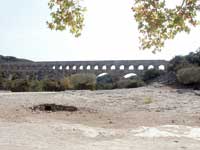
| |
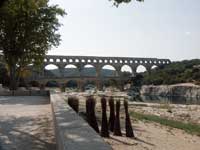
|

|
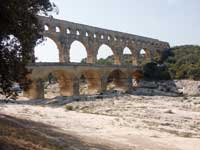
|
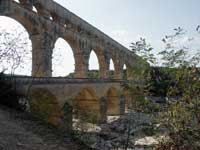
|
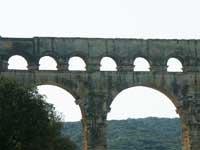
|
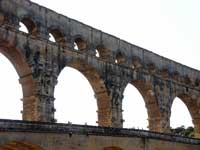
|
Roman engineering skillThis aqueduct was built from stone from the river bed with uncemented blocks weighing up to two tons each. Water was carried at the top level some 180 feet above the ground. Each large arch spans more than 80 feet. While the engineering skill is obvious, modern critics also note the interest in aesthetics exhibited by this practical design. The sequence of arches, or the "intentional quickening" is noted by Hanfmann, with the "55 smaller arches of the top story set in triads over the large arches" (75). Earlier Stendhal commented on the "sublime music" of the monument while Wheeler comments that the aqueduct demonstrates the "apotheosis of the arch, used with the functional good taste which was a Roman gift and elevated engineering to the level of an art" (149). | ||
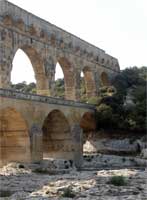
|
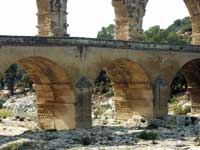
|
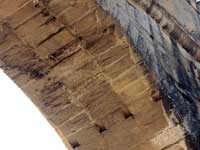
|
| The modern bridge along the east side was built in the middle of the eighteenth century. The photos showing people walking across this bridge give a sense of the enormous scale. | ||
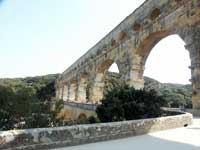
|

|
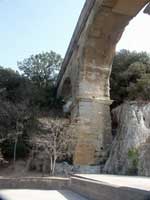
|
 Click here to return to index of art historical sites.
Click here to return to index of art historical sites.
 Click here to return to index of artists and architects.
Click here to return to index of artists and architects.
 Click here to return to chronological index.
Click here to return to chronological index.
 Click here to see the home page of Bluffton College.
Click here to see the home page of Bluffton College.

